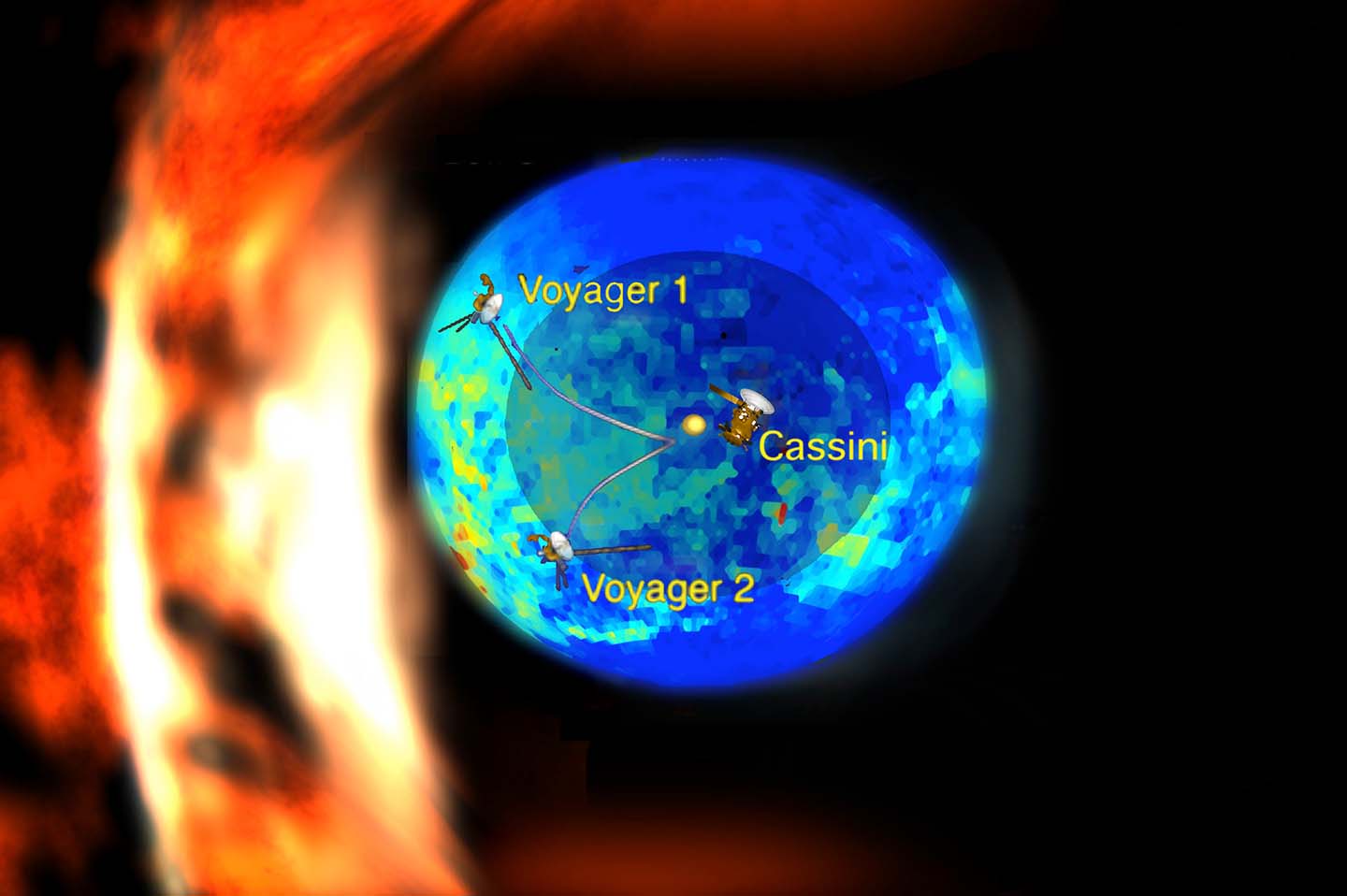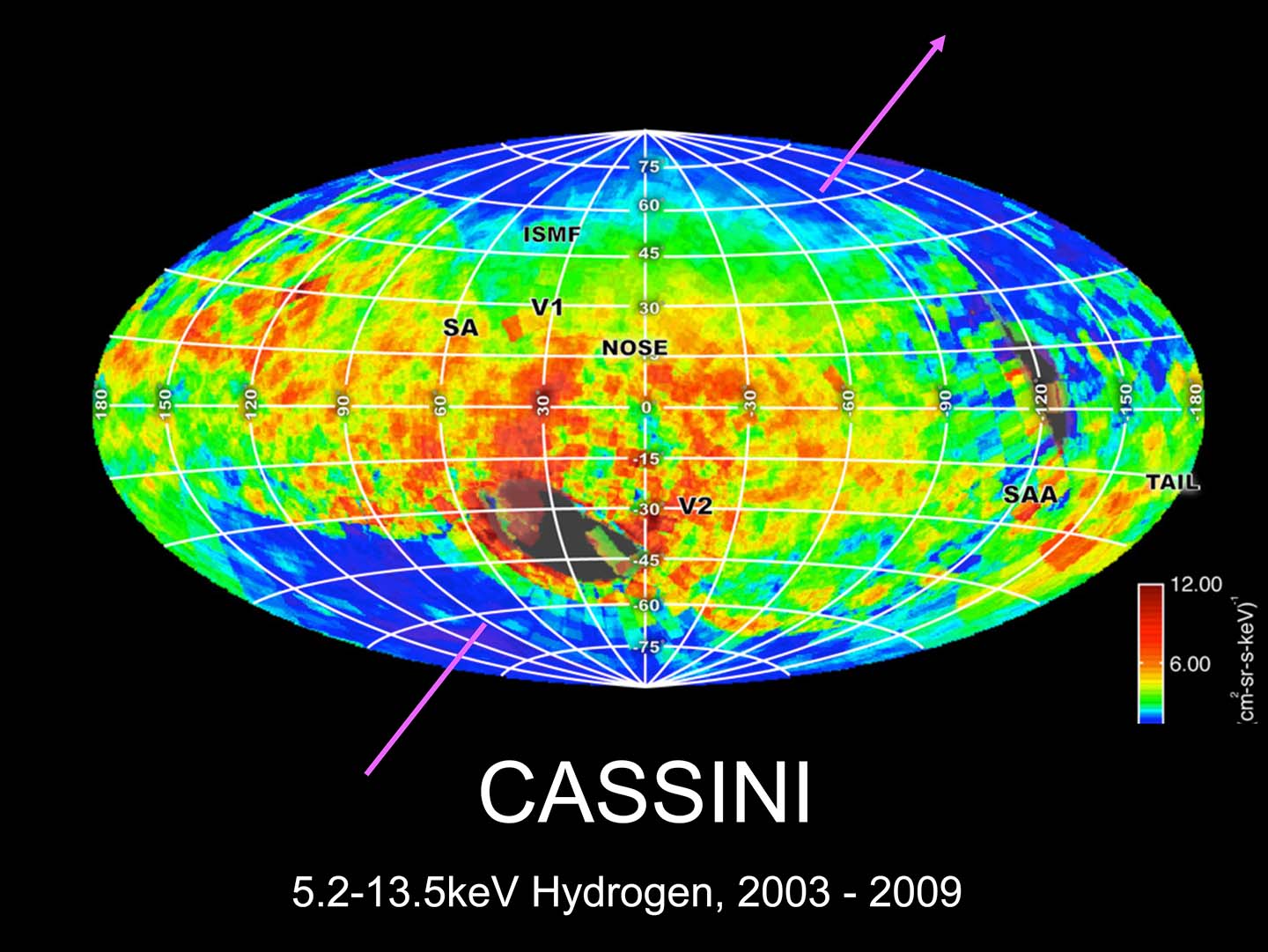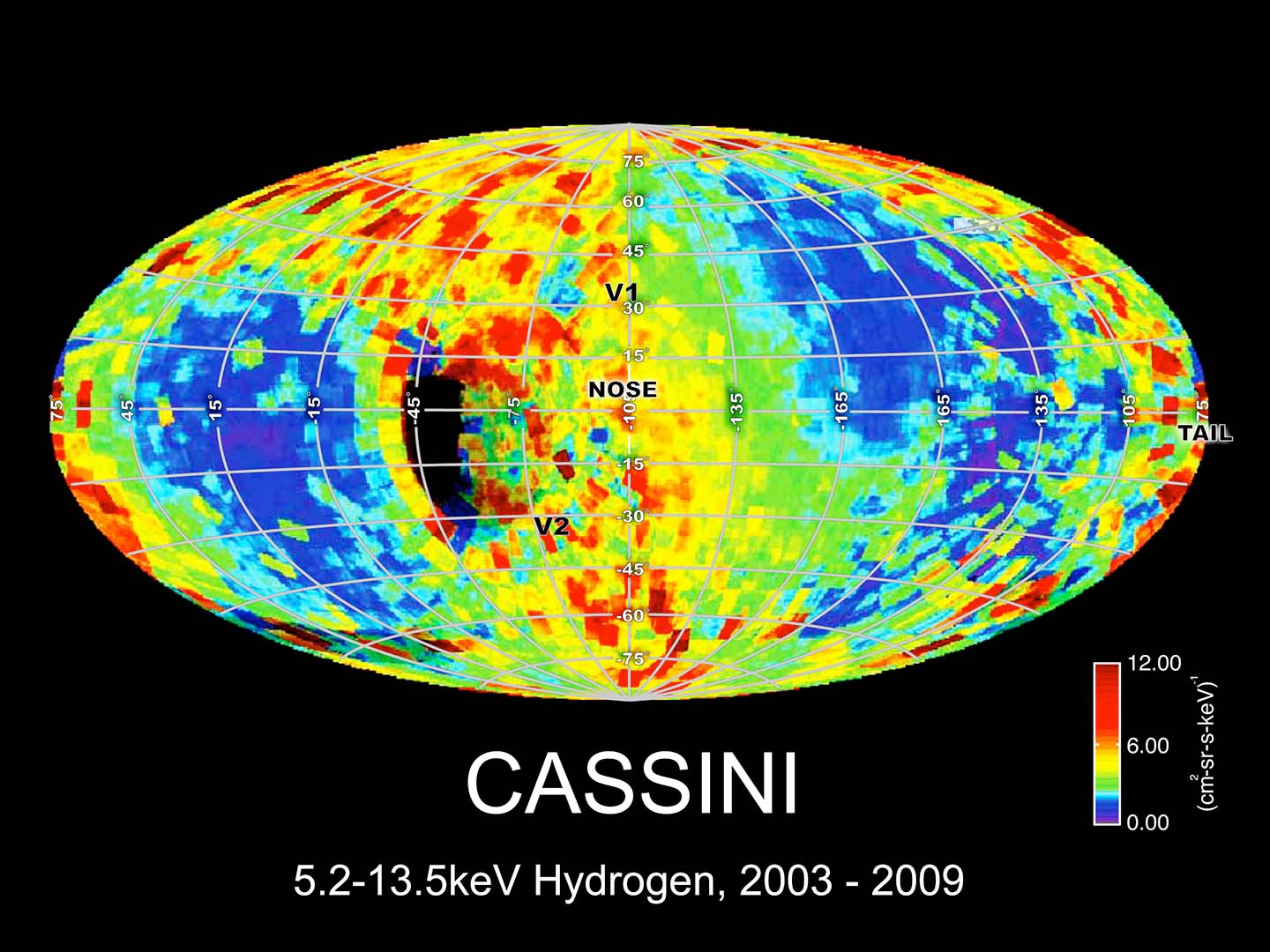Press Release
Cassini Helps Redraw Shape of Solar System
Thu, 10/15/2009 - 08:36
In a paper published Oct. 15 in Science, researchers from The Johns Hopkins University Applied Physics Laboratory (APL) present a new view of the region of the sun’s influence, or heliosphere, and the forces that shape it. Images from one of the Magnetospheric Imaging Instrument’s sensors, the Ion and Neutral Camera (MIMI/INCA), on NASA’s Cassini spacecraft suggest that the heliosphere may not have the comet-like shape predicted by existing models.
“These images have revolutionized what we thought we knew for the past fifty years; the sun travels through the galaxy not like a comet but more like a big, round bubble” said Stamatios Krimigis, principal investigator for MIMI, which is orbiting Saturn. “It’s amazing how a single new observation can change an entire concept that most scientists had taken as true for nearly fifty years.”
As the solar wind flows from the sun, it carves out a bubble in the interstellar medium. Models of the boundary region between the heliosphere and interstellar medium have been based on the assumption that the relative flow of the interstellar medium and its collision with the solar wind dominate the interaction. This would create a foreshortened “nose” in the direction of the solar system’s motion, and an elongated “tail” in the opposite direction.
The INCA images suggest that the solar wind’s interaction with the interstellar medium is instead more significantly controlled by particle pressure and magnetic field energy density.
“The map we’ve created from INCA’s images suggests that pressure from a hot population of charged particles and interaction with the interstellar medium’s magnetic field strongly influence the shape of the heliosphere,” says Don Mitchell, MIMI/INCA co-investigator at APL.


